You are using an out of date browser. It may not display this or other websites correctly.
You should upgrade or use an alternative browser.
You should upgrade or use an alternative browser.
PLUSSOUND Allegro
- Added by Sebastien Chiu
- Create date
o0genesis0o
Headphoneus Supremus
Pros: + Excellent resolution and detail retrieval
+ Snappy but not wimpy bass response
+ Excellent at recreating the sense of space in recordings
+ Snappy but not wimpy bass response
+ Excellent at recreating the sense of space in recordings
Cons: - Too much upper treble around the 12kHz region
- Tonality can sound uncanny and metallic with some recordings
- Can reveal distracting recording artefacts
- Large shells
- Tonality can sound uncanny and metallic with some recordings
- Can reveal distracting recording artefacts
- Large shells
What happen when a renowned cable maker builds IEM? Today, we are going to look at Plussound’s Allegro, a 12-driver tribrid behemoth.
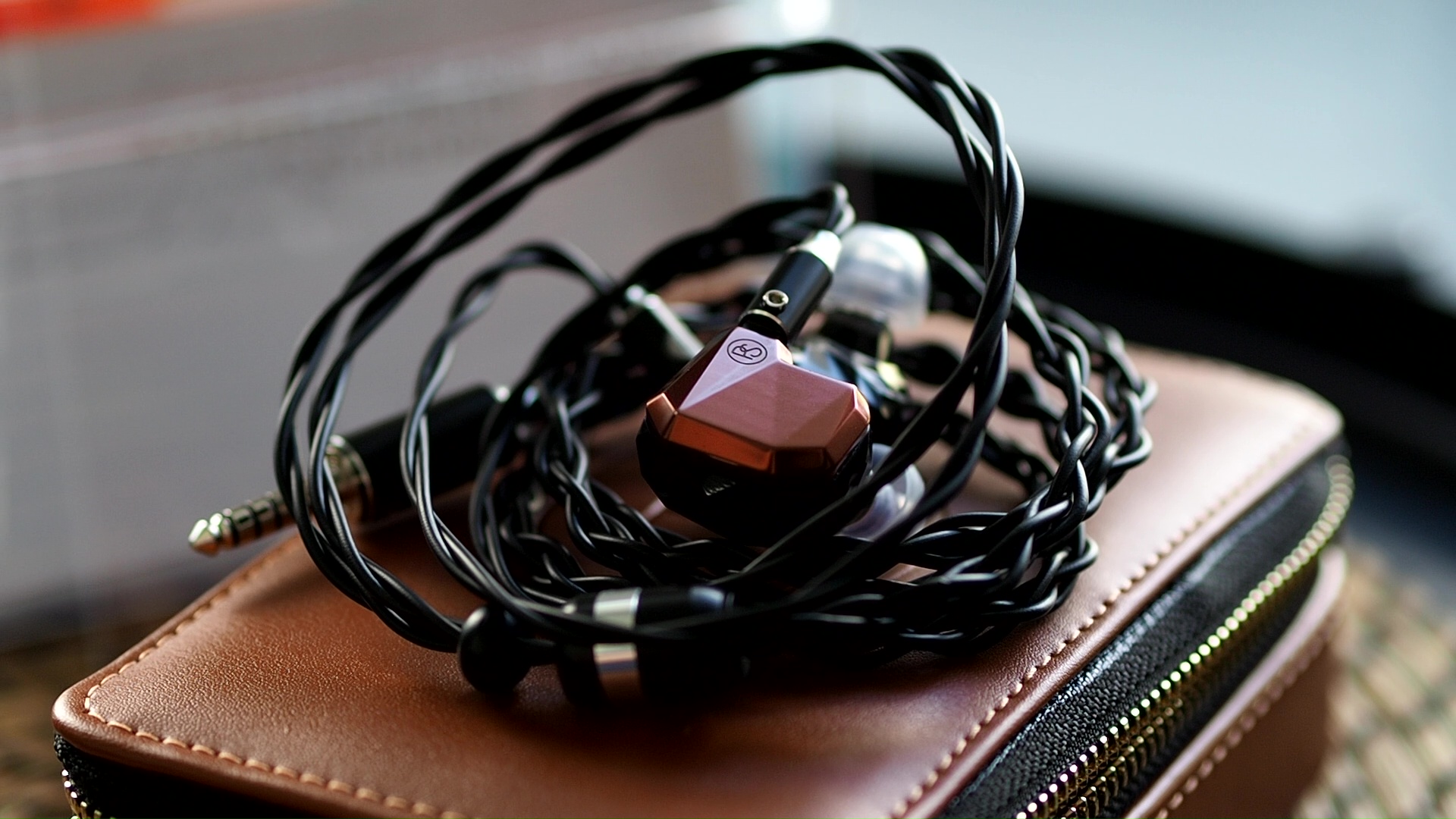



Accessories: It should be noted that my review sample may not come with the full retail packaging. Upon opening the box, there is a plastic cover that proudly states the product is hand assembled in LA. Underneath the cover, you will find a large leather case containing the IEMs themselves, a cable, and a leather cable tie, which I did not unpack. Additionally, my review sample came with multiple sets of ear tips. Unfortunately, I had difficulty achieving a good seal with the stock silicone ear tips, so I used my own Xelastec tips throughout the review period.
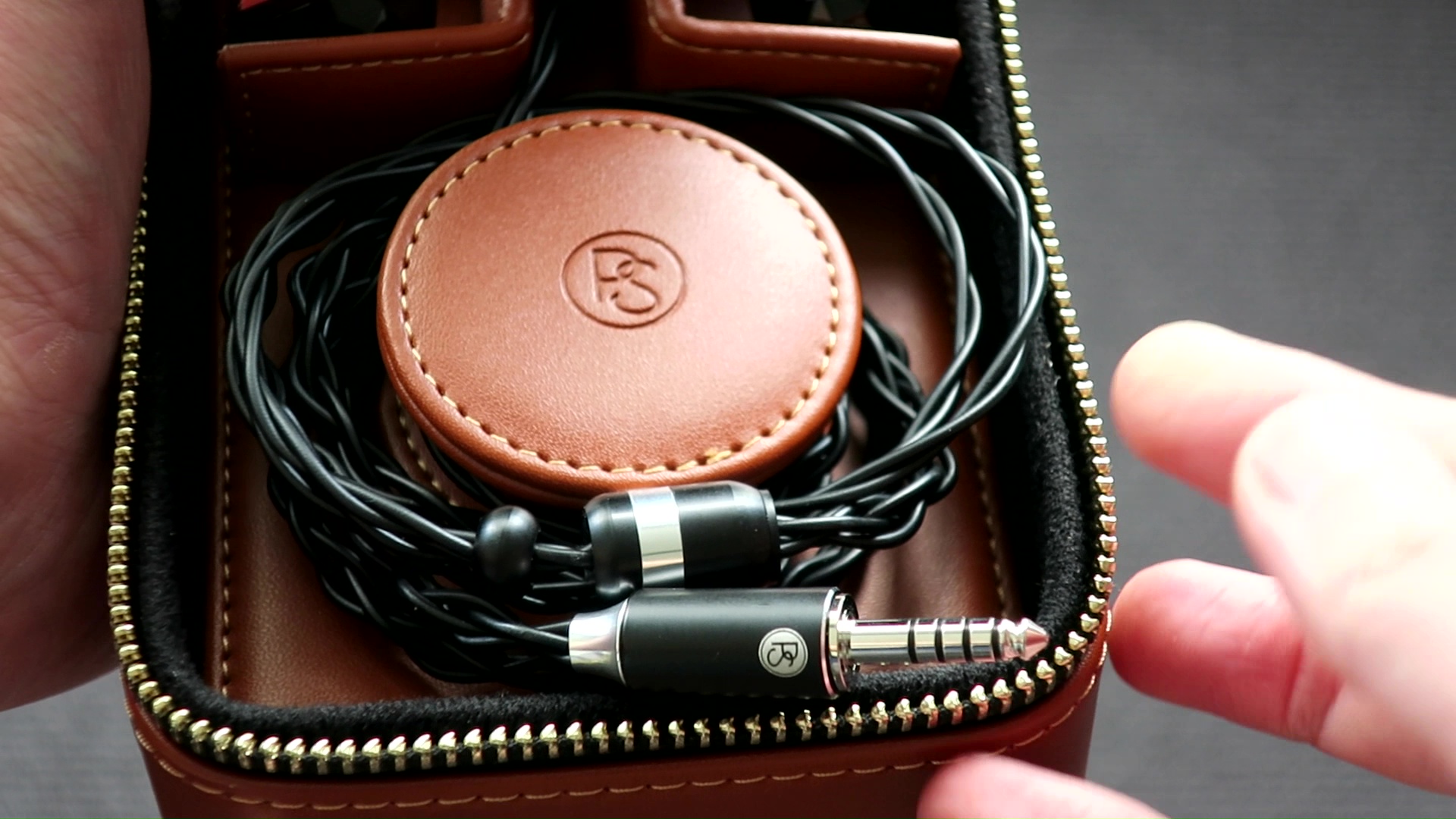
Stock cable: The stock cable provided with the Allegro IEMs is similar to the one that comes with the Effect Audio Gaea. It is thick, stiff, and hard to handle (some of you might like it). Fortunately, the cable did not cause any discomfort or noise once I properly positioned the IEMs. The hardware used on the cable has excellent build quality and a luxurious appearance.
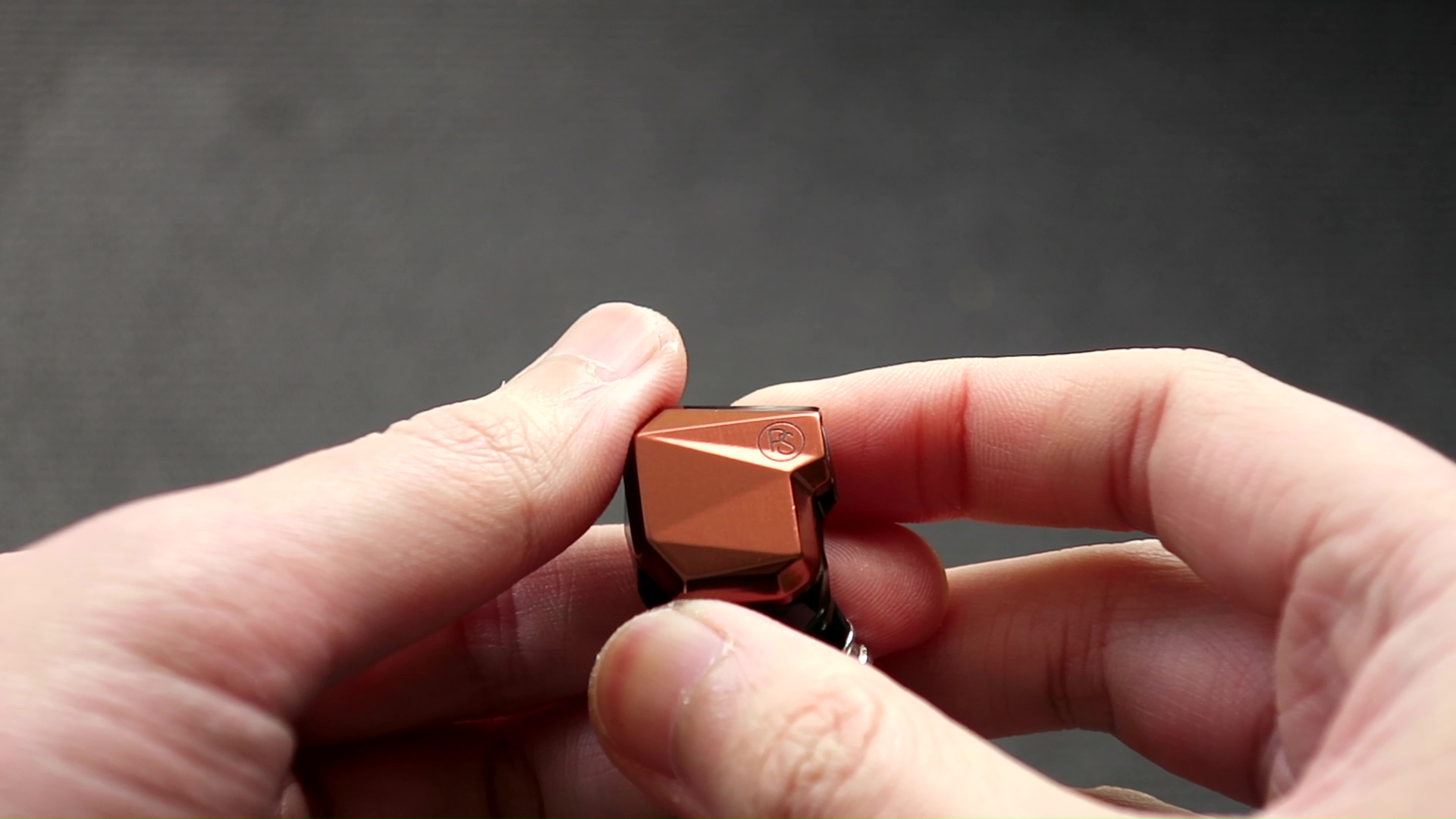
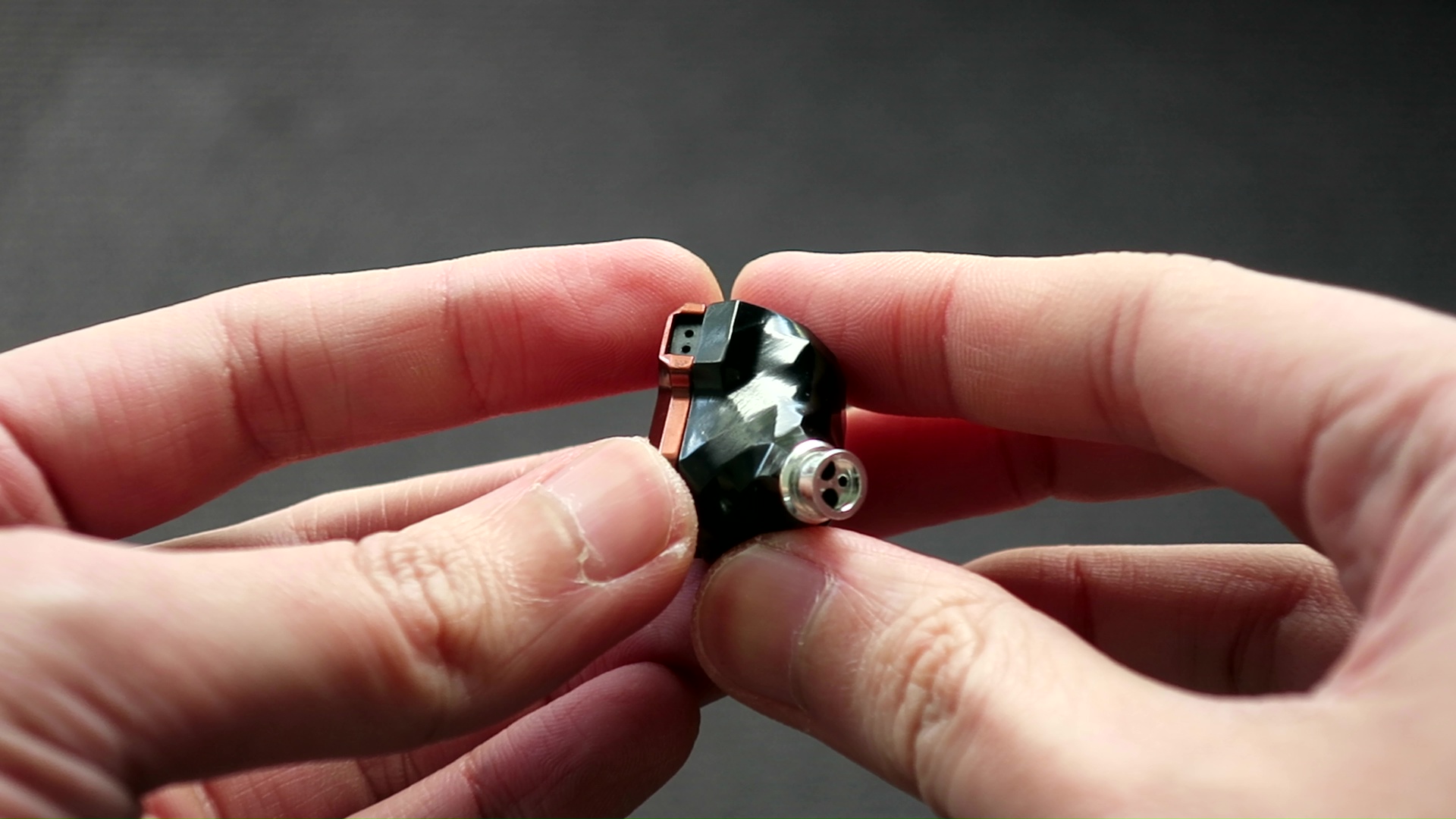

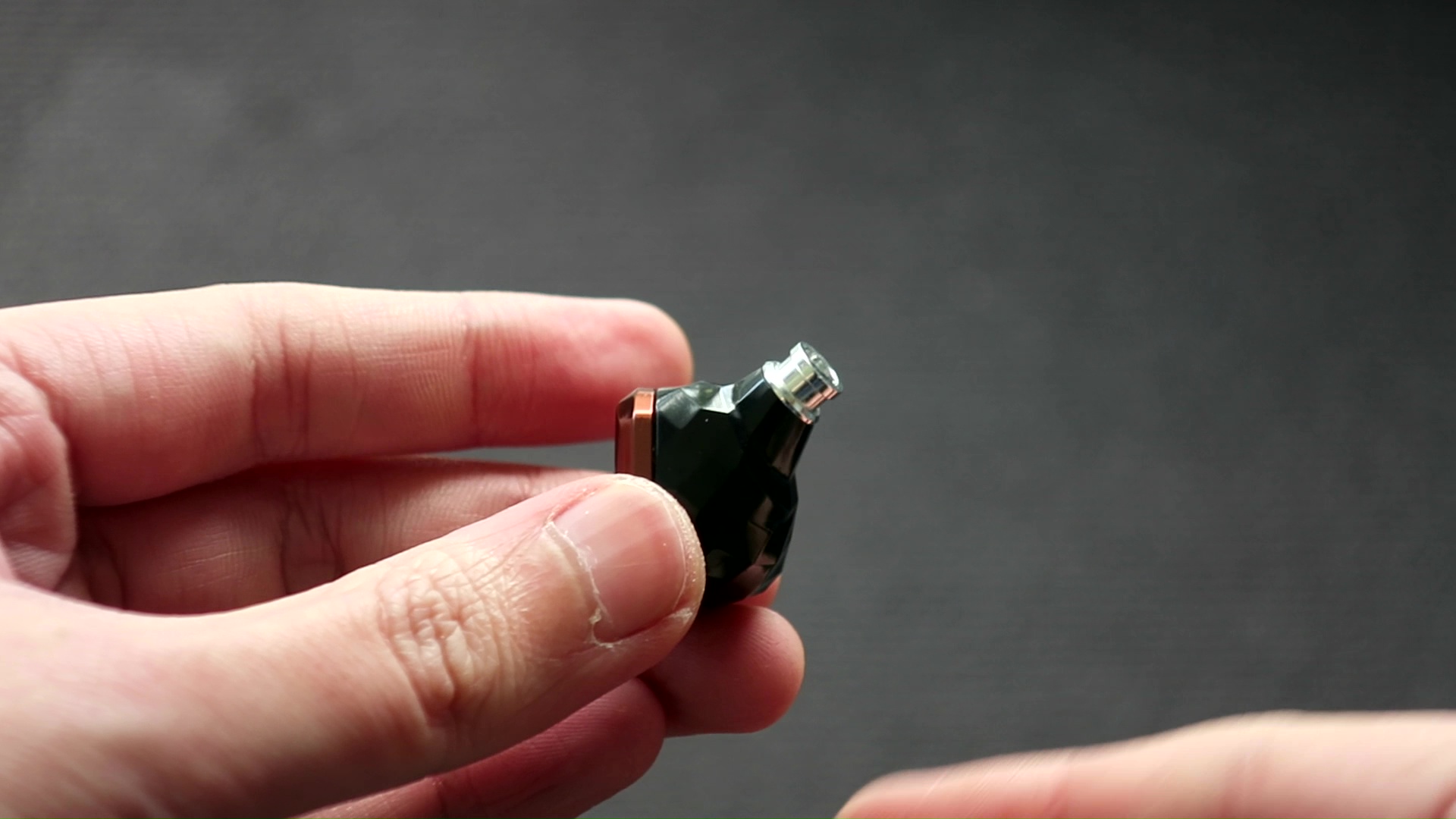
Earpieces: The earpieces of the Allegro IEMs are constructed from metal, giving them a solid feel. Initially, I mistook the black portion of the shell for plastic due to its intricate surface details. However, upon closer inspection, I discovered that this part is actually CNC-machined metal. The nozzles of the Allegro are noticeably large, and overall, the earpieces themselves are quite big and heavy. The shape of the Allegro can be likened to a pebble attached to a stick. The stick portion goes into the ear canal while the pebble portion rarely touches the ears. Due to the size of the nozzle, some eartips, such as my preferred CP145, would lose their seal after a few minutes. However, once I found suitable ear tips, namely Xelastec in my case, I found the fit and comfort to be excellent. With the right fit, the noise isolation provided by the Allegro is also quite decent.
It’s worth noting that the 2-pin connectors of the Allegro are somewhat loose, allowing the earpieces to detach from the cable if shaken. If you like to hang your IEM around your neck when moving around, don’t. You might find yourself missing an earpiece or two.

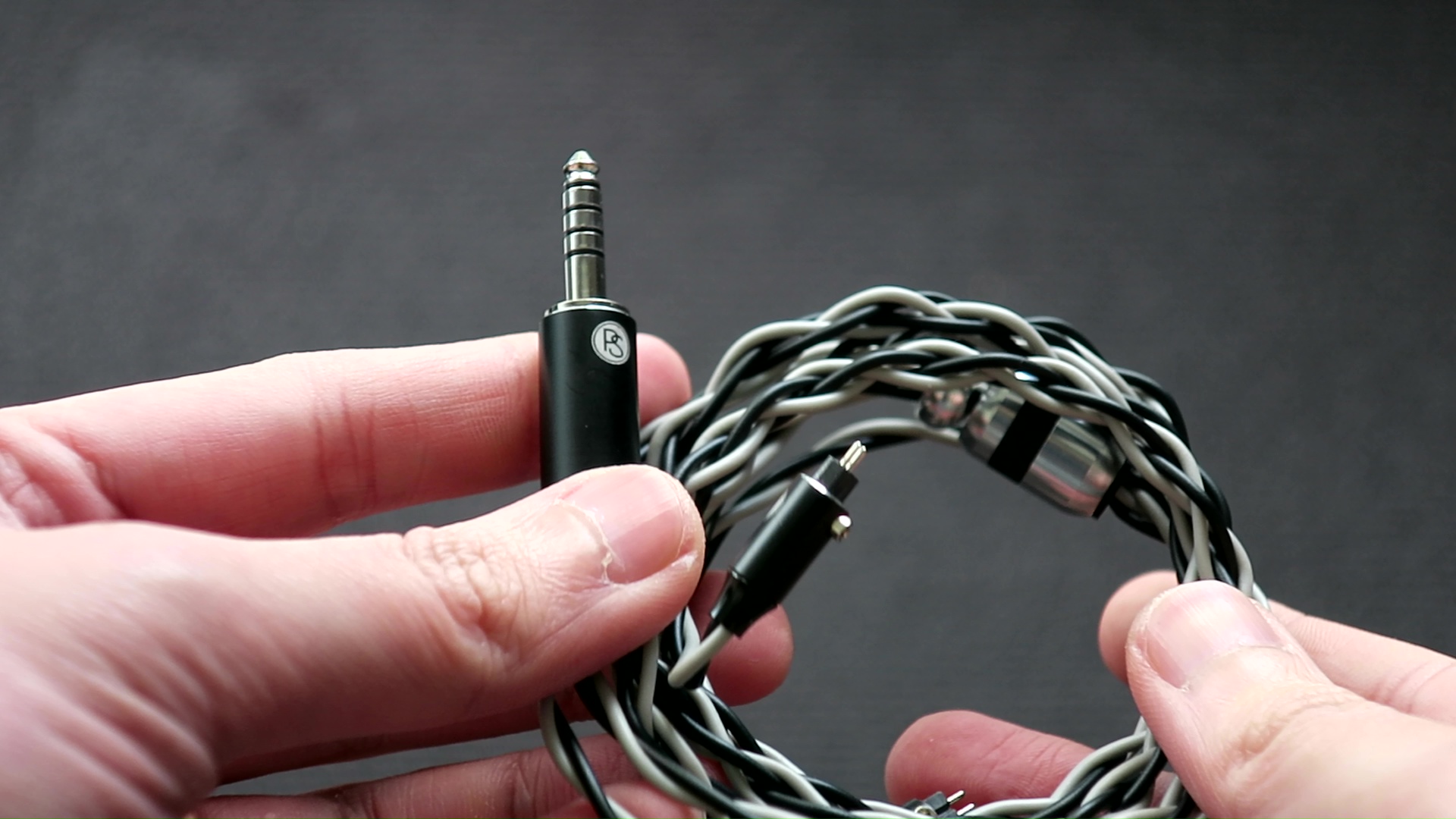
Other accessories: In addition to the aforementioned accessories, the review sample of the Allegro IEMs includes some extra goodies that are not typically included in the retail unit. Plussound, being a cable maker, provides two additional cables to showcase their collection. The cable that was attached to the Allegro when I received it was not the stock cable. I conducted a series of A/B tests in an attempt to discern any differences in sound quality. Ultimately, I found that the black cable “matches” Allegro the best by reducing a little of its upper treble. Interestingly, this black cable is actually the stock cable.
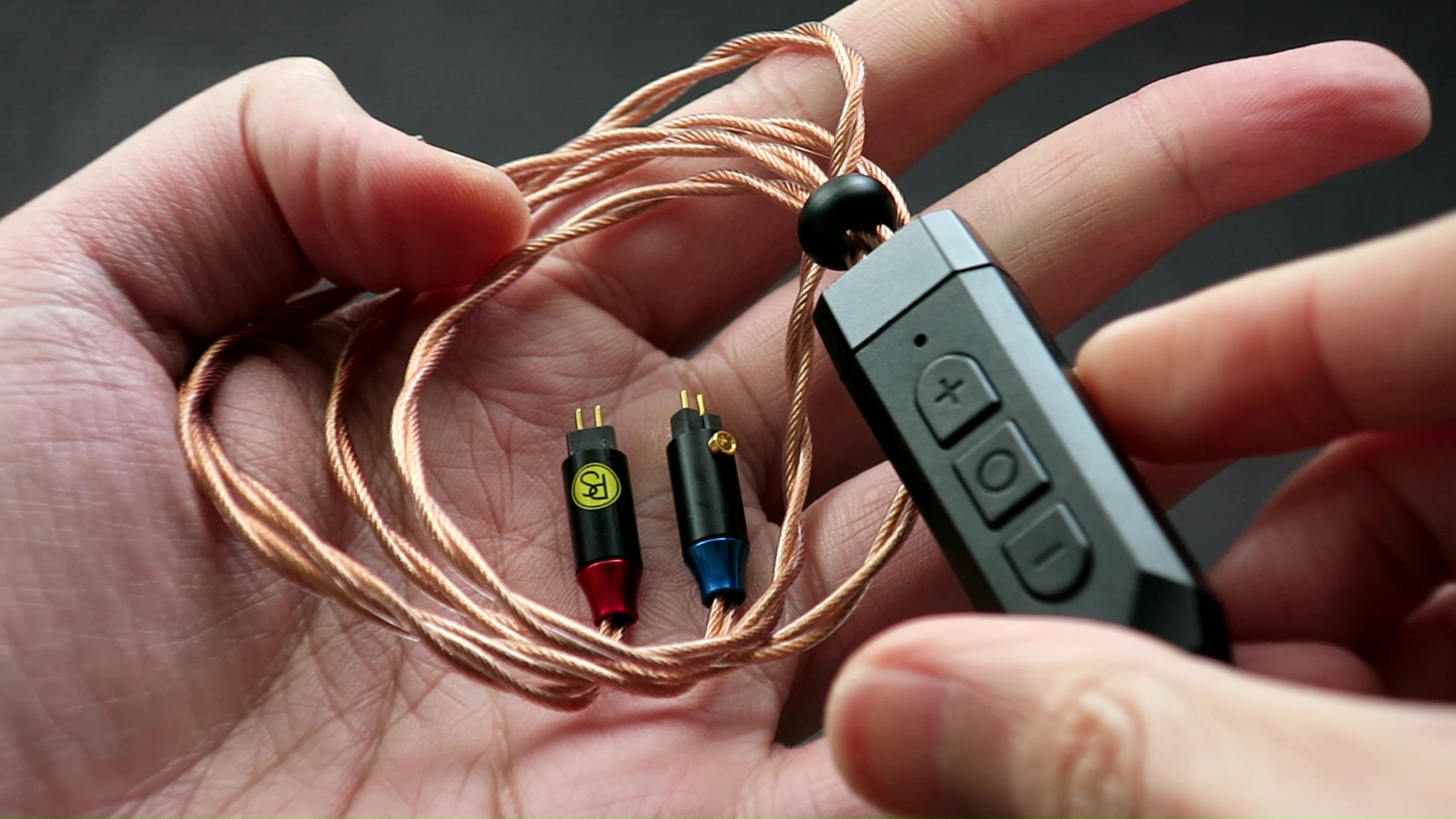
Another interesting accessory included with the review sample is a Bluetooth adapter with fancy wires. While basic in functionality, it proves to be reliable, maintaining a stable connection with my iPhone using AAC. In terms of sound, the adapter introduces a noticeable roll-off in the upper treble compared to my BTR5. This change complements the sound signature of the Allegro quite well.
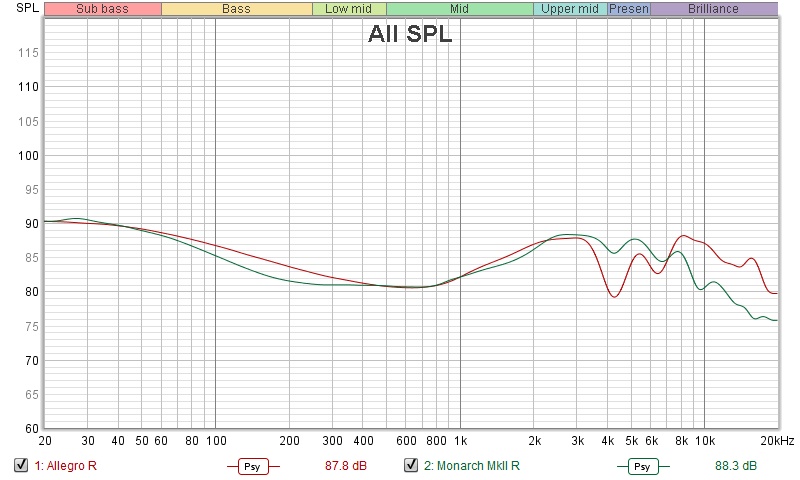
It is helpful to think of an IEM as a filter that highlights or subdues different parts of the incoming audio signal. This effect can be measured objectively by the squiggly lines above, called Frequency Response (FR) graphs, which measure how loud an IEM is at different frequencies from 20Hz (bass) to 20kHz (upper treble). Subjectivity is how your ears and brain interpret the effect of that filter on your music and decide whether it is “enjoyable.” There are some “rules of thumb” when it comes to tonality, but most interesting IEMs usually bend the rules masterfully.
The standout features of the Allegro IEMs are undoubtedly the pair of dynamic drivers (DD) acting as woofers and the four EST drivers acting as tweeters. Plussound has made sure that the presence of these drivers is hard to overlook. The most prominent aspect of the Allegro’s sound signature is the significant and sustained boost in the upper-treble. This emphasis on treble is a double-edged sword for the Allegro. The overall tonality of the Allegro can be described as bright U-shaped, with a relatively flat midrange sandwiched between boosted subbass and upper-treble.
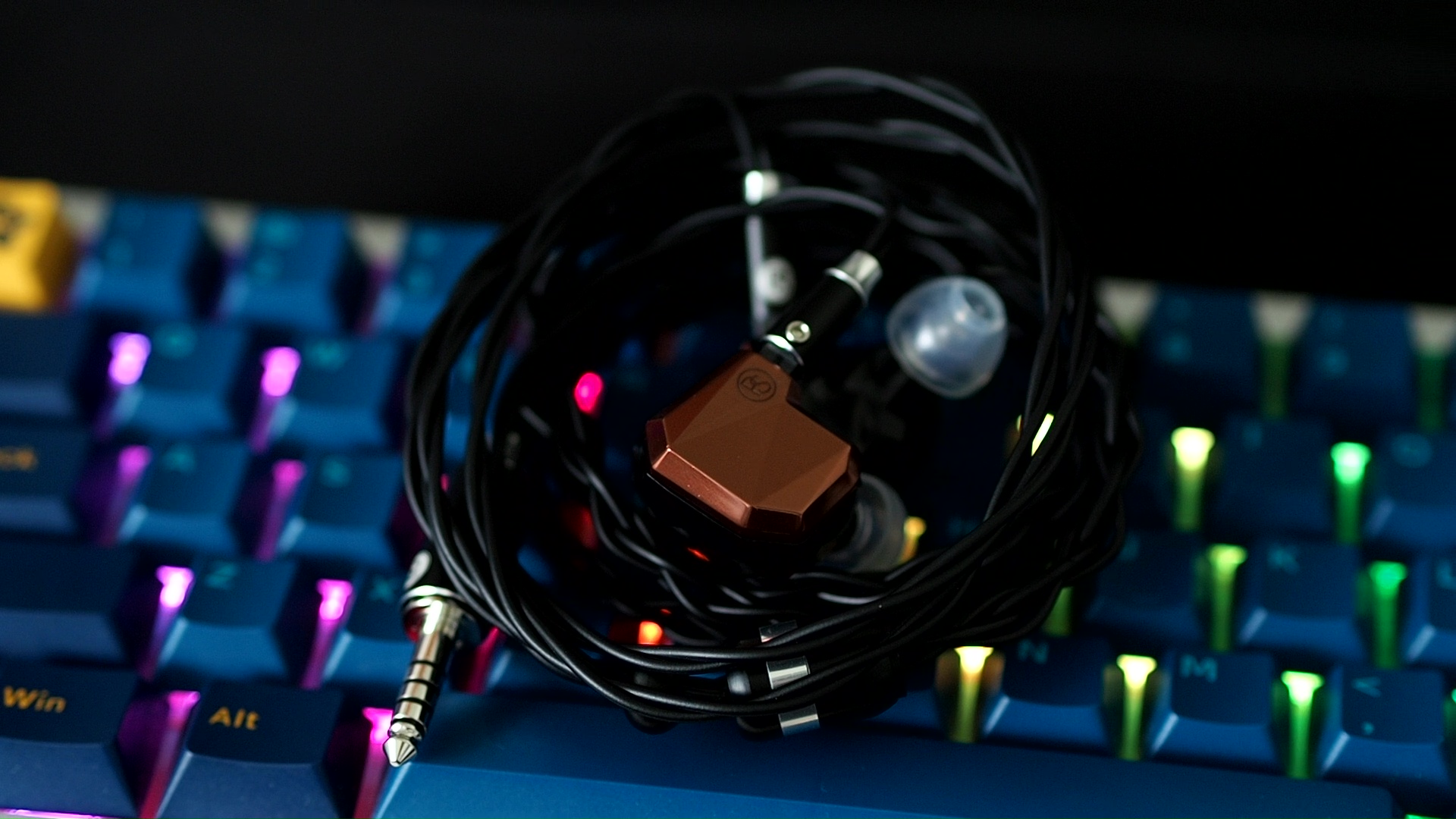
Let’s begin with the bass. The Allegro exhibits a boost in the bass above the midrange, particularly in the subbass region. This tuning gives the bass response a controlled and focused character, with a tactile feeling akin to precise jabs rather than a heavy slam. The woofers in the Allegro perform well in executing this tuning, resulting in good bass quality. The attack of bass notes is snappy and clean, and there’s a sense of bounciness expected from dynamic driver bass, rather than the crisp, almost plasticky feeling that is common with balanced armature bass.
The midrange of Allegro can be described as open and correct, without relying on excess upper midrange energy. It features a slight lift in the lower midrange to bring a touch of warmth to vocals and instruments. However, Allegro is only slightly warmer than reference, rather than a warm or coloured IEM. The upper midrange features a modest 8dB ear gain that is sustained between 2kHz and 3kHz. This “flat-top” is reminiscent of the Monarch II. This tuning choice brings vocals, especially female’s, out of the mix, but not to the point of making vocals shouty.
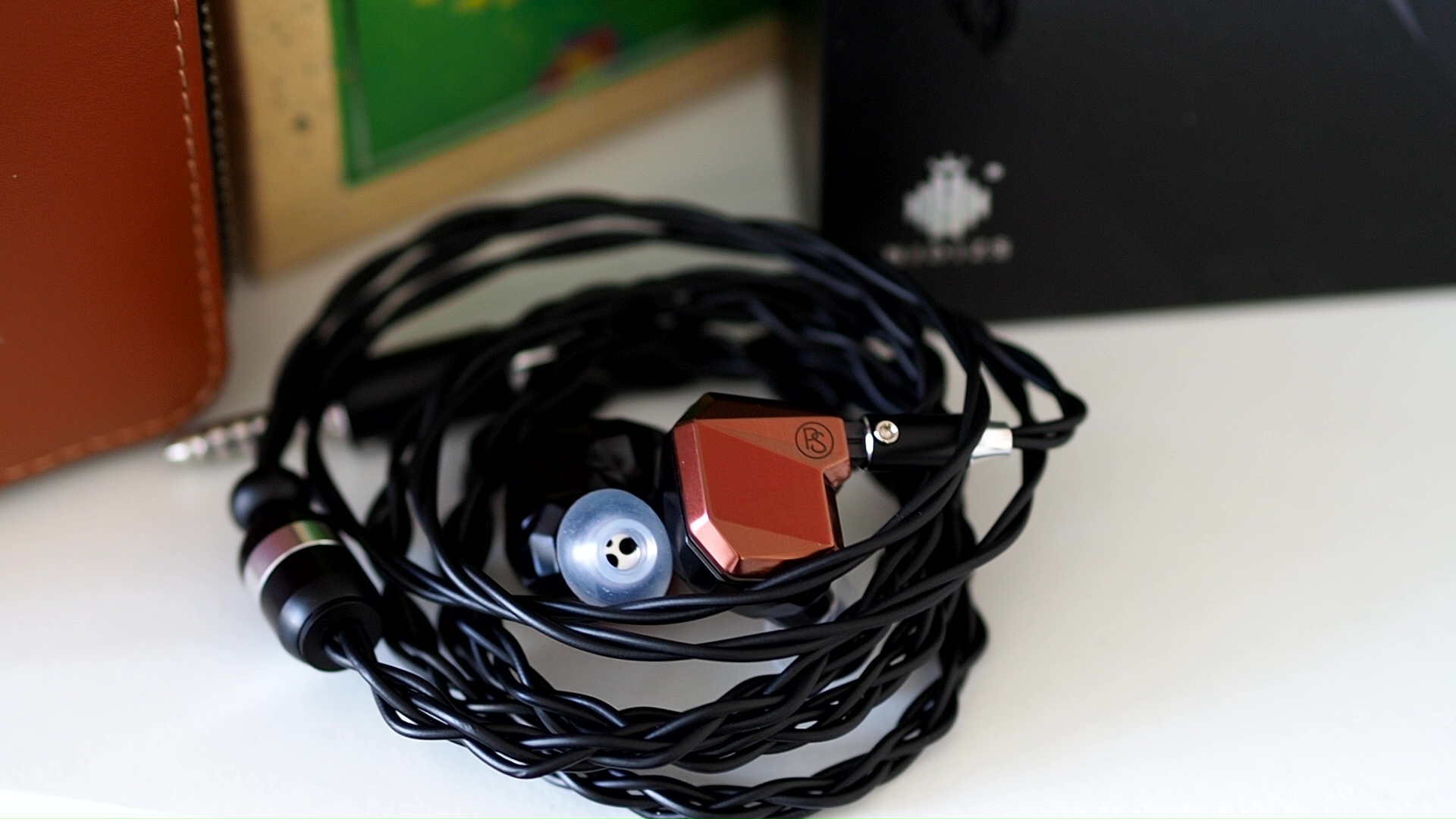
Now, let’s delve into the treble. First, the positive aspect: the Allegro has excellent treble extension, conveying a sense of airiness and reverb in recordings with clarity and completeness. This airiness is particularly enjoyable when listening to large orchestral pieces or live recordings.
However, there are some issues with the treble tuning. Instead of solely focusing the upper treble energy in the 15-16kHz region, Plussound chooses to emphasize the 10-12kHz region to a high degree as well. This tuning decision proves to be a double-edged sword. On one hand, it helps the Allegro achieve an unusual level of detail retrieval, bringing forth small artifacts that may go unnoticed on other IEMs. On the other hand, it imparts a metallic tint to the timbre of most instruments, occasionally making cellos sound unnatural due to this metallic timbre.
Another issue arises from the significant dip at 4kHz, further highlighting the uneven tuning of the treble region. This dip removes some texture from the music, such as the vocals in “Jolene” performed by Pentatonix. It also diminishes the energy and impact of stick strikes on cymbals and hi-hats. For instance, when listening to “Eye of the Tiger” by Survivor, I noticed that the cymbals and hi-hats sounded splashy and lacked crispness. The treble quality is not poor, but somewhat unrefined for a top-of-the-line IEM.

Stereo imaging or “soundstage” is a psychoacoustic illusion that different recording elements appear at various locations inside and around your head. Your brain creates based on the cues in the recording, which are enhanced or diminushed by your IEMs, your DAC, and your amplifier. Some IEMs present a wide but flat soundstage. Some present a “3D” soundstage with layering, depth, and height. In rare cases, with some specific songs, some IEMs can trick you into thinking that the sound comes from the environment (a.k.a., “holographic”)
Soundstage imaging with music (One Winged Angel by the Danish National Symphony Orchestra and Winter by Voices of Music):
The soundstage of the Allegro IEMs leans towards the larger side. It exhibits a wider rather than deeper soundstage, with the center of the stage often positioned close to the face or even within the head at times. The sense of layering within the soundstage is strong. Thanks to the Allegro’s treble extension, the outermost layers of the stage, such as the choir and the reverb, are appropriately placed with a distinct sense of distance and separation from the foreground elements, such as the rest of the orchestra. Instrument placement within the stage is sharp and precise, clearly noticeable in the opening of the Winter concerto. For example, I can discern that the violas are positioned further back in the stage compared to other instruments.
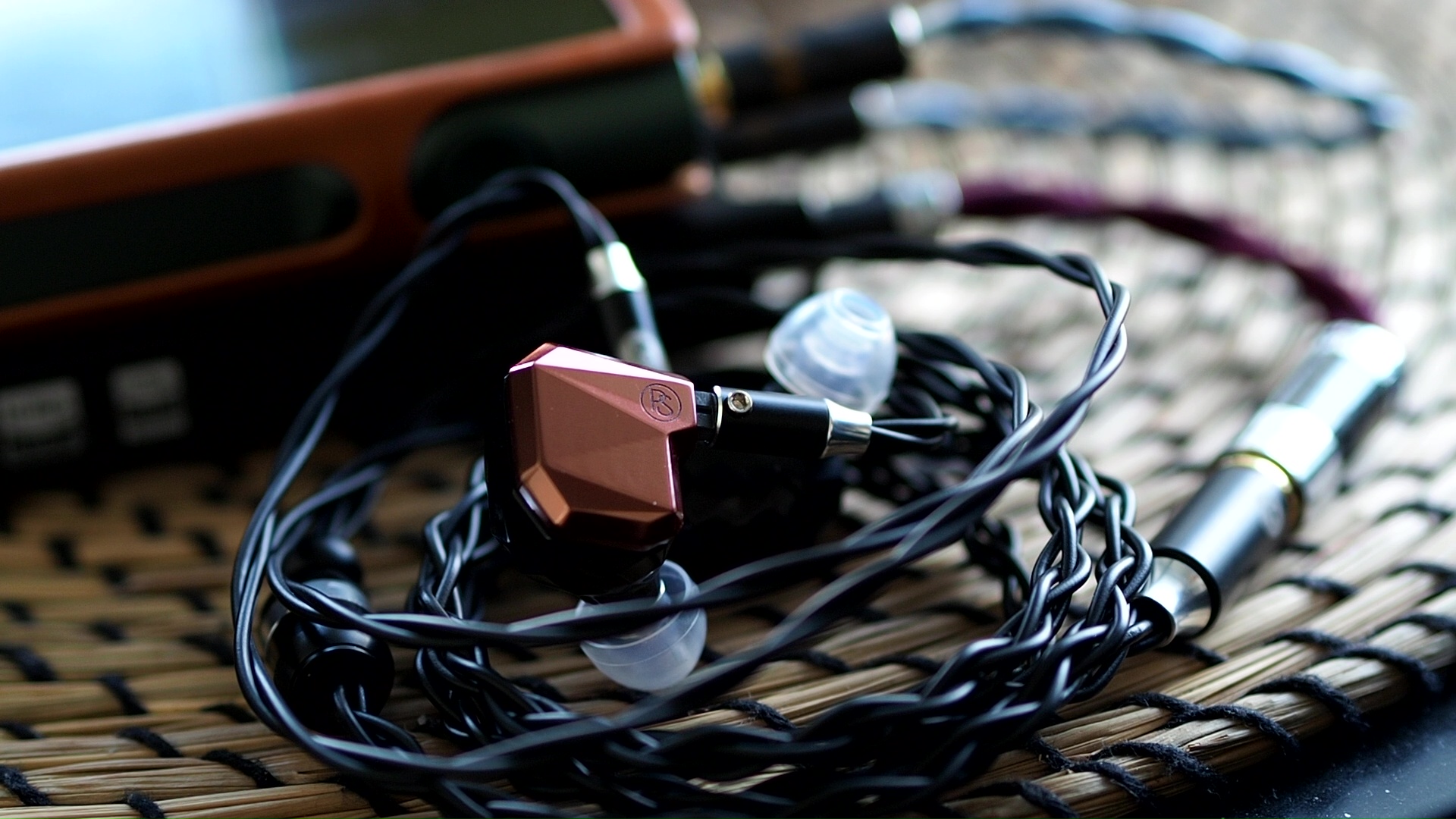
Soundstage imaging with games (CS GO Gameplay by Throneful):
The shape of the soundstage in the Allegro IEMs is wider than it is deep, which is evident during gaming sessions. However, it is remarkably easy to identify and track the direction of sounds as they move around the player. The Allegro also excels at conveying the distance and the height of sounds, allowing for accurate estimation of their position in relation to the listener.

Resolution is a fascinating subject due to the difficulty of pinning down what it really is. To me, “resolution” can be broken down into three components: (1) Sharpness, incisiveness, or “definition” of note attacks (see the figure above). (2) The separation of instruments and vocals, especially when they overlap on the soundstage. (3) The texture and details in the decay side of the notes. The first two give music clarity and make it easy to track individual elements of a mix. The last provides music details and nuances. Smooth and well extended treble response plays a crucial role.
Clarity and Separation (One Winged Angel by the Danish National Symphony Orchestra): When it comes to clarity and separation, the Allegro IEMs exhibit a specific tuning that slightly mutes or overly smoothes the definition of note attacks, if one pays careful attention. Despite this, the overall presentation of the orchestra in the track remains crystal clear, and the individual instruments are well separated within the soundstage.
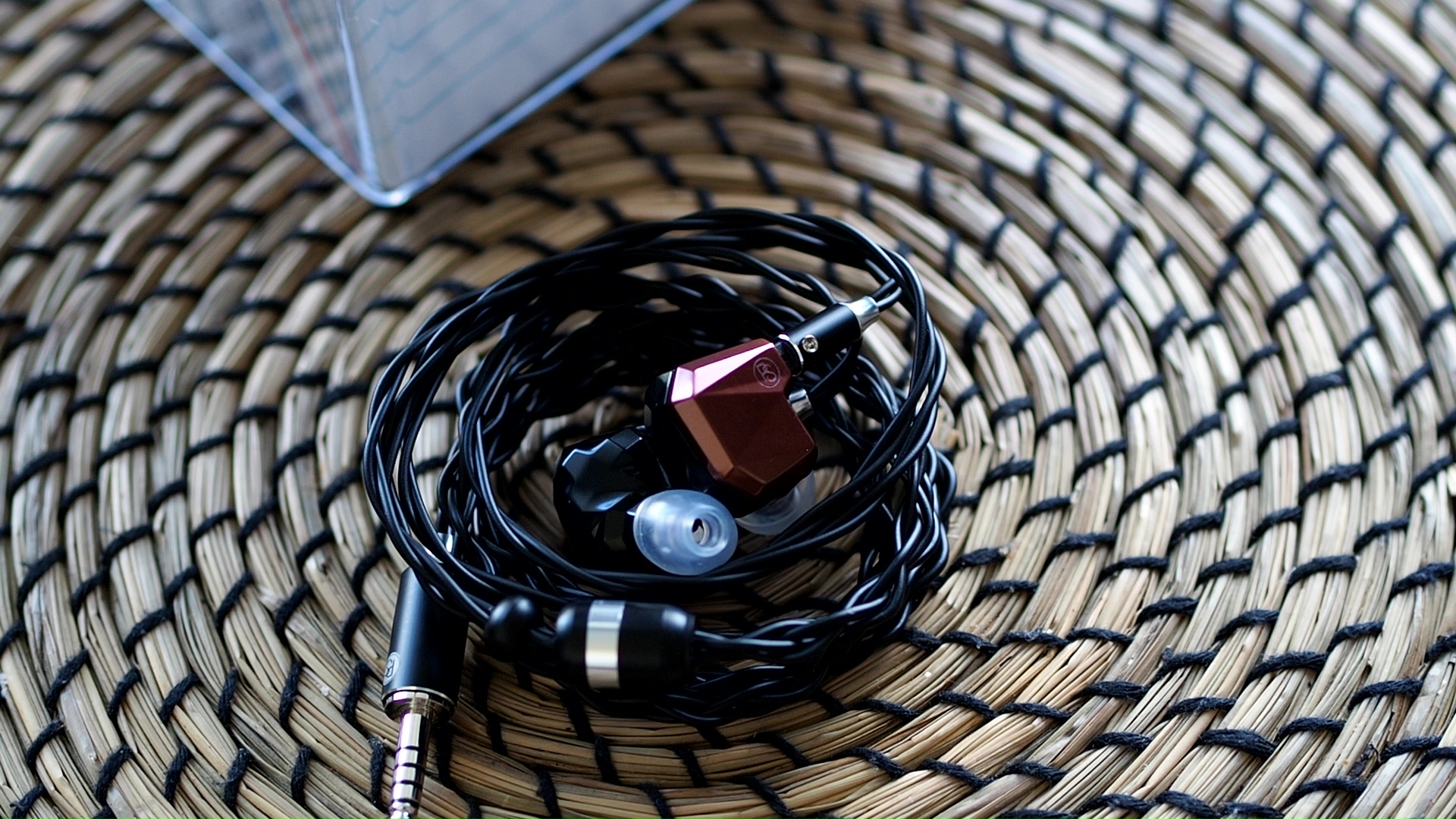
Detail retrieval (Paganini Caprice 24 by Daniel Lozakovich):Thanks to the treble tuning with emphasis around the 10-12kHz region, the Allegro excels in detail retrieval. It brings out every nuance and intricate detail, such as the sound of tapping on the fingerboard or the subtle bounces of the bow on the string. The Allegro’s ability to reveal room reverberations and decays also enhances the sense of space in recordings. However, it should be noted that the emphasis of the Allegro’s tuning can occasionally highlight distracting artifacts from certain recordings. For example, when listening to Lang Lang’s Goldberg Variations recordings, I noticed annoying clicking noises from the piano that were not audible with other IEMs, even those known for their high resolution.

Tonality: 3/5 - Adequate
From a macro level, the tuning of Allegro is quite promising with deep bass extension, strong treble extension, a flat and open midrange, and an appropriate amount of ear gain. However, the tonality of these IEMs never quite feels completely right due to various issues in the treble region. While it remains adequate, I personally expected a bit more from a flagship-level IEM.
Percussion Rendering: Aria (3/5) < Blessing 2 (4/5) <= Allegro (4/5) < U12T / E5000 (5/5)
The bass of the Allegro lives up to its name, delivering a fast and lively performance. It offers deep bass with snappy attacks that provide a solid foundation to the overall sound. However, it may lack some excitement, as it occasionally falls short of delivering the full impact and slam that one might expect in certain bass-heavy moments.
Resolution: SE215 (3/5) < Blessing 2 (4/5) < Andromeda 2020 (4.5/5) < U12T (5/5) = Allegro (5/5)
In terms of resolution, the Allegro IEMs confidently take their place among the upper echelon of the IEM world. The Allegro’s treble tuning, although unconventional, allows it to reveal details that even the U12T might overlook. However, it is worth noting that this level of resolution can sometimes reveal recording artifacts, which can be both a blessing and a drawback.
Soundstage: SE215 (3/5) < Blessing 2 (4/5) < Andromeda 2020 (5/5) = Allegro (5/5)
Thanks to its treble extension, the Allegro IEMs boast an expansive soundstage that extends far beyond the listener. Despite having the center image positioned close to the face or even in-the-head, the Allegro manages to create a sense of space and separation between instruments. The imaging is precise, allowing for accurate placement of different elements within the soundstage.
Pros:
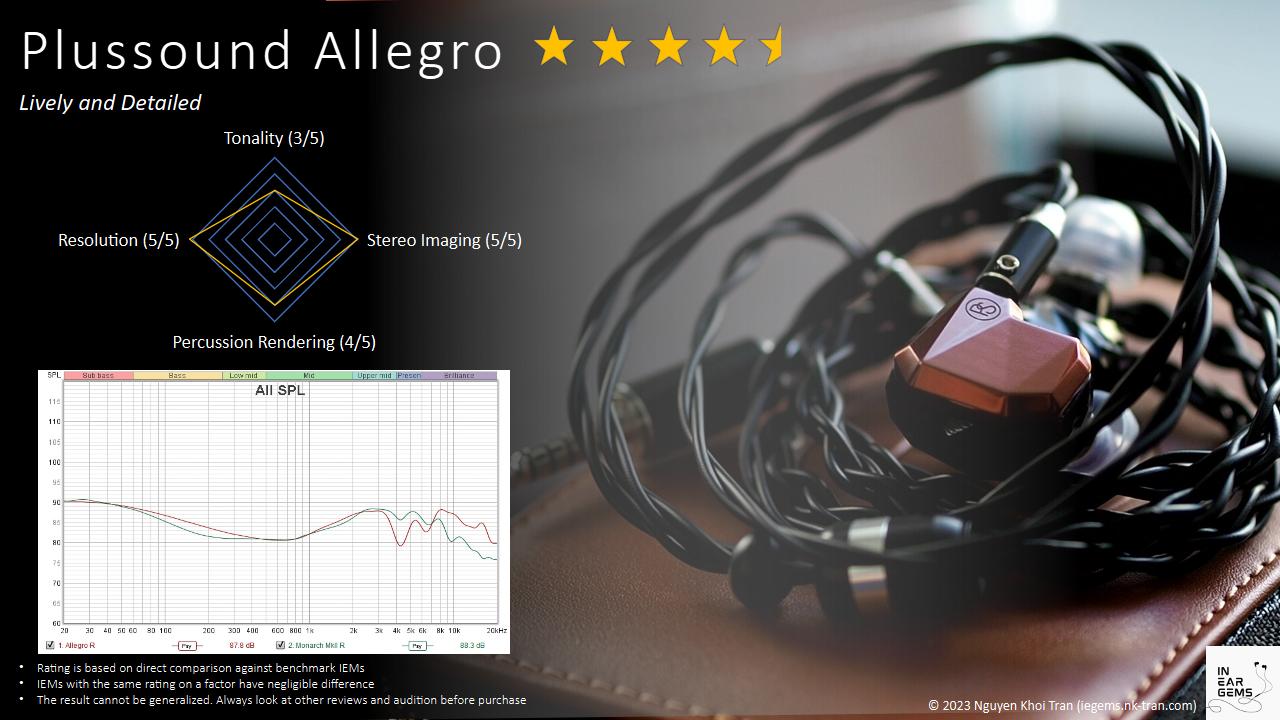
Updated: June 24, 2023

Forewords
- What I look for in an IEM is immersion. I want to feel the orchestra around me, track individual instruments, and hear all of their textures and details. I’m not picky about tonality, as long as it does not get in the way of immersion.
- I rate IEMs within with a consistent scale from 1 (poor) to 3 (Adequate) to 5 (outstanding). Ratings are assigned by A/B tests against benchmark IEMs, regardless of the retail price.
- Ranking list and measurement database are on my IEM review blog.
- This review is possible thanks to the Australian tour arranged by Plussound and @Damz87 (Thank you!). I have no affiliation with or financial interest in Plussound. The unit retails for $3499 at the time this review was published. You can find out more details and grab yourself a unit from Plussound online store
Specs
- Driver: 2DD + 6BA + 4EST (6-way crossover)
- Connector Type: 2-pin 0.78
- Impedance: 10 ohms @1kHz @1mW
- Sensitivity: 112 dB @1kHz
Build and Comfort



Accessories: It should be noted that my review sample may not come with the full retail packaging. Upon opening the box, there is a plastic cover that proudly states the product is hand assembled in LA. Underneath the cover, you will find a large leather case containing the IEMs themselves, a cable, and a leather cable tie, which I did not unpack. Additionally, my review sample came with multiple sets of ear tips. Unfortunately, I had difficulty achieving a good seal with the stock silicone ear tips, so I used my own Xelastec tips throughout the review period.

Stock cable: The stock cable provided with the Allegro IEMs is similar to the one that comes with the Effect Audio Gaea. It is thick, stiff, and hard to handle (some of you might like it). Fortunately, the cable did not cause any discomfort or noise once I properly positioned the IEMs. The hardware used on the cable has excellent build quality and a luxurious appearance.




Earpieces: The earpieces of the Allegro IEMs are constructed from metal, giving them a solid feel. Initially, I mistook the black portion of the shell for plastic due to its intricate surface details. However, upon closer inspection, I discovered that this part is actually CNC-machined metal. The nozzles of the Allegro are noticeably large, and overall, the earpieces themselves are quite big and heavy. The shape of the Allegro can be likened to a pebble attached to a stick. The stick portion goes into the ear canal while the pebble portion rarely touches the ears. Due to the size of the nozzle, some eartips, such as my preferred CP145, would lose their seal after a few minutes. However, once I found suitable ear tips, namely Xelastec in my case, I found the fit and comfort to be excellent. With the right fit, the noise isolation provided by the Allegro is also quite decent.
It’s worth noting that the 2-pin connectors of the Allegro are somewhat loose, allowing the earpieces to detach from the cable if shaken. If you like to hang your IEM around your neck when moving around, don’t. You might find yourself missing an earpiece or two.


Other accessories: In addition to the aforementioned accessories, the review sample of the Allegro IEMs includes some extra goodies that are not typically included in the retail unit. Plussound, being a cable maker, provides two additional cables to showcase their collection. The cable that was attached to the Allegro when I received it was not the stock cable. I conducted a series of A/B tests in an attempt to discern any differences in sound quality. Ultimately, I found that the black cable “matches” Allegro the best by reducing a little of its upper treble. Interestingly, this black cable is actually the stock cable.

Another interesting accessory included with the review sample is a Bluetooth adapter with fancy wires. While basic in functionality, it proves to be reliable, maintaining a stable connection with my iPhone using AAC. In terms of sound, the adapter introduces a noticeable roll-off in the upper treble compared to my BTR5. This change complements the sound signature of the Allegro quite well.
Tonality
Frequency response of Allegro against the Monarch II. Measurements were done with an IEC-711-compliant coupler and might only be compared with other measurements from this same coupler. Visit my graph database for more comparisons.
It is helpful to think of an IEM as a filter that highlights or subdues different parts of the incoming audio signal. This effect can be measured objectively by the squiggly lines above, called Frequency Response (FR) graphs, which measure how loud an IEM is at different frequencies from 20Hz (bass) to 20kHz (upper treble). Subjectivity is how your ears and brain interpret the effect of that filter on your music and decide whether it is “enjoyable.” There are some “rules of thumb” when it comes to tonality, but most interesting IEMs usually bend the rules masterfully.
The standout features of the Allegro IEMs are undoubtedly the pair of dynamic drivers (DD) acting as woofers and the four EST drivers acting as tweeters. Plussound has made sure that the presence of these drivers is hard to overlook. The most prominent aspect of the Allegro’s sound signature is the significant and sustained boost in the upper-treble. This emphasis on treble is a double-edged sword for the Allegro. The overall tonality of the Allegro can be described as bright U-shaped, with a relatively flat midrange sandwiched between boosted subbass and upper-treble.

Let’s begin with the bass. The Allegro exhibits a boost in the bass above the midrange, particularly in the subbass region. This tuning gives the bass response a controlled and focused character, with a tactile feeling akin to precise jabs rather than a heavy slam. The woofers in the Allegro perform well in executing this tuning, resulting in good bass quality. The attack of bass notes is snappy and clean, and there’s a sense of bounciness expected from dynamic driver bass, rather than the crisp, almost plasticky feeling that is common with balanced armature bass.
The midrange of Allegro can be described as open and correct, without relying on excess upper midrange energy. It features a slight lift in the lower midrange to bring a touch of warmth to vocals and instruments. However, Allegro is only slightly warmer than reference, rather than a warm or coloured IEM. The upper midrange features a modest 8dB ear gain that is sustained between 2kHz and 3kHz. This “flat-top” is reminiscent of the Monarch II. This tuning choice brings vocals, especially female’s, out of the mix, but not to the point of making vocals shouty.

Now, let’s delve into the treble. First, the positive aspect: the Allegro has excellent treble extension, conveying a sense of airiness and reverb in recordings with clarity and completeness. This airiness is particularly enjoyable when listening to large orchestral pieces or live recordings.
However, there are some issues with the treble tuning. Instead of solely focusing the upper treble energy in the 15-16kHz region, Plussound chooses to emphasize the 10-12kHz region to a high degree as well. This tuning decision proves to be a double-edged sword. On one hand, it helps the Allegro achieve an unusual level of detail retrieval, bringing forth small artifacts that may go unnoticed on other IEMs. On the other hand, it imparts a metallic tint to the timbre of most instruments, occasionally making cellos sound unnatural due to this metallic timbre.
Another issue arises from the significant dip at 4kHz, further highlighting the uneven tuning of the treble region. This dip removes some texture from the music, such as the vocals in “Jolene” performed by Pentatonix. It also diminishes the energy and impact of stick strikes on cymbals and hi-hats. For instance, when listening to “Eye of the Tiger” by Survivor, I noticed that the cymbals and hi-hats sounded splashy and lacked crispness. The treble quality is not poor, but somewhat unrefined for a top-of-the-line IEM.
Soundstage Imaging

Stereo imaging or “soundstage” is a psychoacoustic illusion that different recording elements appear at various locations inside and around your head. Your brain creates based on the cues in the recording, which are enhanced or diminushed by your IEMs, your DAC, and your amplifier. Some IEMs present a wide but flat soundstage. Some present a “3D” soundstage with layering, depth, and height. In rare cases, with some specific songs, some IEMs can trick you into thinking that the sound comes from the environment (a.k.a., “holographic”)
Soundstage imaging with music (One Winged Angel by the Danish National Symphony Orchestra and Winter by Voices of Music):
The soundstage of the Allegro IEMs leans towards the larger side. It exhibits a wider rather than deeper soundstage, with the center of the stage often positioned close to the face or even within the head at times. The sense of layering within the soundstage is strong. Thanks to the Allegro’s treble extension, the outermost layers of the stage, such as the choir and the reverb, are appropriately placed with a distinct sense of distance and separation from the foreground elements, such as the rest of the orchestra. Instrument placement within the stage is sharp and precise, clearly noticeable in the opening of the Winter concerto. For example, I can discern that the violas are positioned further back in the stage compared to other instruments.

Soundstage imaging with games (CS GO Gameplay by Throneful):
The shape of the soundstage in the Allegro IEMs is wider than it is deep, which is evident during gaming sessions. However, it is remarkably easy to identify and track the direction of sounds as they move around the player. The Allegro also excels at conveying the distance and the height of sounds, allowing for accurate estimation of their position in relation to the listener.
Resolution

Resolution is a fascinating subject due to the difficulty of pinning down what it really is. To me, “resolution” can be broken down into three components: (1) Sharpness, incisiveness, or “definition” of note attacks (see the figure above). (2) The separation of instruments and vocals, especially when they overlap on the soundstage. (3) The texture and details in the decay side of the notes. The first two give music clarity and make it easy to track individual elements of a mix. The last provides music details and nuances. Smooth and well extended treble response plays a crucial role.
Clarity and Separation (One Winged Angel by the Danish National Symphony Orchestra): When it comes to clarity and separation, the Allegro IEMs exhibit a specific tuning that slightly mutes or overly smoothes the definition of note attacks, if one pays careful attention. Despite this, the overall presentation of the orchestra in the track remains crystal clear, and the individual instruments are well separated within the soundstage.

Detail retrieval (Paganini Caprice 24 by Daniel Lozakovich):Thanks to the treble tuning with emphasis around the 10-12kHz region, the Allegro excels in detail retrieval. It brings out every nuance and intricate detail, such as the sound of tapping on the fingerboard or the subtle bounces of the bow on the string. The Allegro’s ability to reveal room reverberations and decays also enhances the sense of space in recordings. However, it should be noted that the emphasis of the Allegro’s tuning can occasionally highlight distracting artifacts from certain recordings. For example, when listening to Lang Lang’s Goldberg Variations recordings, I noticed annoying clicking noises from the piano that were not audible with other IEMs, even those known for their high resolution.
Comparison and Rating

Tonality: 3/5 - Adequate
From a macro level, the tuning of Allegro is quite promising with deep bass extension, strong treble extension, a flat and open midrange, and an appropriate amount of ear gain. However, the tonality of these IEMs never quite feels completely right due to various issues in the treble region. While it remains adequate, I personally expected a bit more from a flagship-level IEM.
Percussion Rendering: Aria (3/5) < Blessing 2 (4/5) <= Allegro (4/5) < U12T / E5000 (5/5)
The bass of the Allegro lives up to its name, delivering a fast and lively performance. It offers deep bass with snappy attacks that provide a solid foundation to the overall sound. However, it may lack some excitement, as it occasionally falls short of delivering the full impact and slam that one might expect in certain bass-heavy moments.
Resolution: SE215 (3/5) < Blessing 2 (4/5) < Andromeda 2020 (4.5/5) < U12T (5/5) = Allegro (5/5)
In terms of resolution, the Allegro IEMs confidently take their place among the upper echelon of the IEM world. The Allegro’s treble tuning, although unconventional, allows it to reveal details that even the U12T might overlook. However, it is worth noting that this level of resolution can sometimes reveal recording artifacts, which can be both a blessing and a drawback.
Soundstage: SE215 (3/5) < Blessing 2 (4/5) < Andromeda 2020 (5/5) = Allegro (5/5)
Thanks to its treble extension, the Allegro IEMs boast an expansive soundstage that extends far beyond the listener. Despite having the center image positioned close to the face or even in-the-head, the Allegro manages to create a sense of space and separation between instruments. The imaging is precise, allowing for accurate placement of different elements within the soundstage.
Conclusion
The first venture of Plussound into the world of IEM is undeniably ambitious, both in terms of driver topology and price. The resulting product, Allegro, lives up to its name by delivering a lively and snappy presentation. Its technical performance is truly impressive. However, Allegro is not without its shortcomings, as it suffers from various minor tuning issues. Moving forward, if Plussound can maintain the exceptional technical performance while addressing these tuning problems, their IEMs have the potential to be truly remarkable.Pros:
- Excellent resolution and detail retrieval
- Snappy but not wimpy bass response
- Excellent at recreating the sense of space in recordings
- Too much upper treble around the 12kHz region
- Tonality can sound uncanny and metallic with some recordings
- Can reveal distracting recording artefacts
- Large shells
- You value clarity and separation.
- You want to hear everything in your music.
- You like the sense of holographic staging in your music.
- You have larger ears.

Updated: June 24, 2023
SenyorC
100+ Head-Fier
Pros: Build, aesthetics, lows, mids...
Cons: Upper ranges too harsh, comfort doesn't work for me...

TLDR version on YouTube: TDLR - Plussound Allegro
The Plussound Allegro have been sent to me as part of a tour for me to try them out and share my opinions in this review. Plussound have not made any requests other than fixing a limit of one week to spend with them.
I will do my best to be as sincere and unbiased as humanly possible but it is always good to consider the fact that it hasn’t cost me anything to try out these IEMs.
The official page for the Plussound Allegro is here: https://www.plussoundaudio.com/earphones/allegro.html
As always, this is a non-affiliate link.
To avoid being repetetive in my reviews, you can find all the info about how I create the reviews, equipment used, how I receive the products and how to interpret my reviews by visiting: About my reviews

Intro…
I have to be honest and say that I know very little about Plussound other than they are known for their cables. I am not certain if the Allegro are their first set of IEMs or not but on their website they are the only model listed. Specified as the “Launch Edition”, the Allegro cost just over 3200€, a price which I believe makes them the most expensive IEMs to be reviewed on Acho Reviews to date.
Now, before the questions of is it better than X that costs X amount less, it is worth pointing out that after a certain level, it is more about adapting to individual tastes rather than becoming “better” per se. However, it does mean that things that would be considered “inconveniences” at other prices, can quickly become deal breakers at this level.
Anyhow, here are my personal findings and opinions of the Allegro after spending a week with them.

Presentation…
I can’t comment on presentation as the tour unit does not include any packaging, it is just the IEMs inside a (very nice) storage case.
They did, however, include 4 different cable cables and a lot of tips of three different types: silicone, Symbio and Comply.
Also in the case, under the IEMs, there is a cleaning brush, a microfiber cloth, a leather strap (for the cable) and a couple of lengths of edging strip (which I honestly have no idea what it is for).

Build and aesthetics…
The IEMs are certainly on the large side, sporting a copper faceplate that uses square edges and geometrical shapes to give it quite a modern look. While I like the look of the IEMs, I am sorry to say that the shape is something that I find extremely uncomfortable. I was actually joking about the fact that the Allegro could become the first IEMs to bring tears to my eyes. This is due to the fact that they really dig in to the top part of my ear, becoming very painful even after a few minutes, yet I was enjoying the music so I kept on listening
To try and combat the issue with comfort, I tried the three types of tips included, along with a large selection of tips that I had on hand. As far as sound, I preferred the included Symbio tips (more on that in a moment) but they actually added to the discomfort. In the end, in order to use them for any extended period, I either had to opt for Crystal’s or Xelastec’s (both in a large size). This allowed me to get a seal slightly further out and was a little more comfortable (although still painful after a while). Out of these two, I preferred the sound of the Crystals but as they sit so far outside the ear, and are heavy IEMs, any slight movements caused the seal to break.
Anyway, fit and comfort is a very personal thing and I have said my piece, so let's move on and talk about the included cables.
I have no idea what each model of cable is called (I could have probably researched but you know how I usually avoid that sort of thing
There have also included a USB cable with inline controls (and DAC/Amp obviously), which is an option when purchasing the Allegro. I am sorry to say that I ran out of time and din’t have chance to test this cable/DAC/Amp.
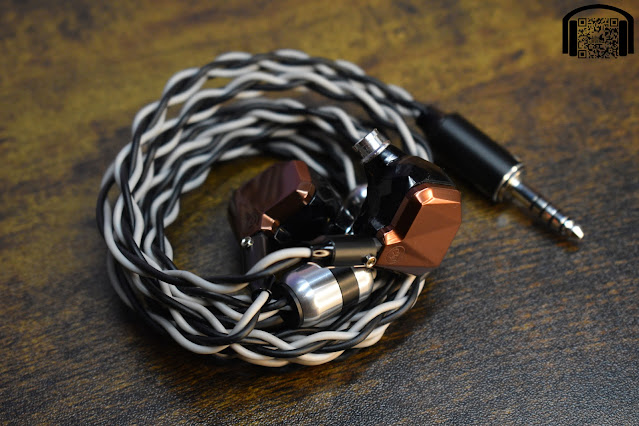
Sound…
All tracks mentioned are clickable links that allow you to open the reference track in the streaming service of your choice (YouTube, Tidal, Qobuz, Spotify, etc.)
I started off by listening mostly to acoustic/vocal music while I was working and I have to say that I really enjoyed the Allegro (apart from the blades digging into my ears) for a very long session of my favourite genre. I did find that some vocals, especially female, could come across peaky and harsh in the upper ranges but in general, I found them to have a very enjoyable signature.
When moving on to other music, specifically things that included more drums than my usual acoustic guitar and singer arrangements, I found that the upper ranges were more on the harsh side than I had first realized.
But let’s take my usual test list and put things into perspective with the tracks that I always use for my detailed listening. In this case, as I wanted to spend a long session to come up with in depth opinions, I used the Azla Crystal tips and made sure to not head bang too much
First, as always, here is the graph comparing them to my usual reference target:

Starting off with “Chameleon” (don’t I always?), the subbass rumbles nicely and keeps it’s posture even when things are getting “heavy” down there. They didn’t actually give me the impression of having as much subbass as they show on the graph but I think that is due to the cleanliness of these low notes, keeping the rumble from taking over the low end.
With “Royals”, the subbass hits nicely and portrays that “dirt” that is part of the low end in this track. Again, I didn’t find that the subbass was as present as I would have imagined by looking at the graph, or to put it better, when I measured the Allegro and saw the results, I was surprised to see such an elevated low end.
The midbass is something that would worry me if I looked at the graph before listening, as I have a tendency to get fatigued very quickly with excessive midbass, especially if the midbass is not very clean and controlled. This is a non issue for me with the Allegro as the midbass is very clean and defined. The quickest test for me is “Crazy” by Daniela Andrade, which can make me nauseous very quickly if the midbass is excessive and not controlled enough, in this case, absolutely no issues.
With something a little more electronic such as “No Sanctuary Here”, the midbass gave the same impression that the subbass did with “Chameleon”. The presence is there but the hits are very clean and controlled, making it seem like there is less presence than there actually is. There is certainly no sensation of bloat to my ears and even faster and busier tracks in the low end, such as “The Room”, are well defined and do not make the bass feel like it is merging with the guitar, nor does it overpower the bass drum.
In the midrange I find that the transition from the lower ranges is very clean, with no noticeable issues. I don’t know at what point the crossover happens but I found that the DD and BA drivers work well together to make the mids sound smooth and collected. I liked the timbre of acoustic instruments especially in the lower midrange, with the DD adding that bit of natural taste to the cleanliness of the BA drivers.
As we move up into the higher mids, again looking at the graph, I would have expected vocals to not be as forward as they are in reality. I found that vocals didn’t take a step forwards but they didn’t blend into the background either having just enough light on them to be the focus point. There were a few male vocals that I did find to be a bit further back than usual, such as Prince in “Black Muse” where his voice seems to be slightly further back than the female vocals.
However, as we move past this point, things start to go downhill in the upper ranges. As I said, with acoustic/vocal music, I found a few female vocals to have a few peaks that could be irritating but not terrible. When we start to add more instruments in these upper ranges things do start to become a lot more peaky and very harsh on occasions.
For example, the plucks in “Elephants On Ice Skates” can actually make me wince on occasions, as can the cymbals in “The Room” or even the snare hits in “Jack of Speed”.
I already know that I am sensitive to 5kHz peaks, which isn’t going to help things, but in this case, the dip before this mark with the additional presence moving up from there puts too much focus on this range, making it uncomfortable with certain tracks and genres.
Sibilance is also present, using the usual “Code Cool”, I would place Patricia Barber (on my completely non-scientific -12 to +12 scale) around a +3 or +4. The hi-hats don’t really help in this track either, adding to the harshness when sibilance occurs. Paul Simon in “Diamonds on the Soles of her Shoes” is much the same.
Details are good, with good image placement and a nice open sensation, not huge but still very enjoyable and above what I have come to expect as average from IEMs. “Bubbles” may not have the largest 3D imaging I have ever heard but it is certainly at a level to make the track enjoyable for what it is.
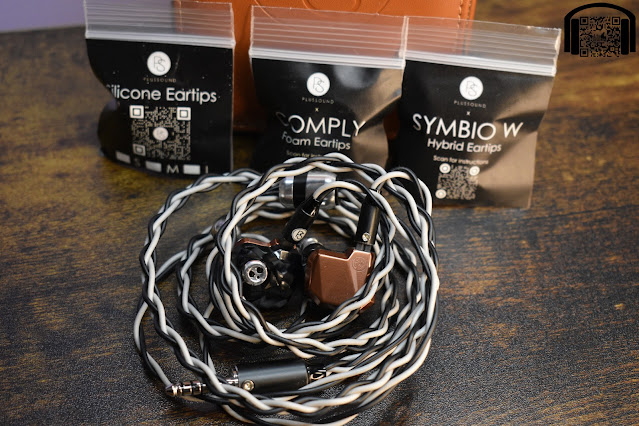
Conclusion…
The Plussound Allegro are a high end set of IEMs that, pardon the pun, come apart in the high end.
If I ignore the issue I have with the comfort of these IEMs, which is obviously a deal breaker for me personally but may not be an issue at all for others, then I have to say that there are things about the Allegro that I have really enjoyed.
I find that the lows and mids work very well together, giving both good sound and great performance in those areas, with details that are impressive and, in general, a pleasant experience in those ranges.
I find that they work very well for acoustic/vocal centric music, which makes up a large portion of what I actually listen to, only showing a less than “comfortable” treble on certain vocals in this genre, mainly female (although some male vocals also).
The problem arises when there is more going on in this upper ranges, such as percussion etc., which starts to put more focus and emphasis on the higher end, making the sharpness become much more apparent. In these cases, the upper ranges, at least to my ears, do become very uncomfortable. There are spikes and sibilance that can actually cause me to wince at certain points in time.
It is very possible that with a combination of different tips (the Symbio did seem to tame them slightly, although not enough) and possibly some filters, that this would not be apparent and result in a more balanced signature in these upper ranges. The issue is that, due to the fit and how painful I find it, I am very limited to what tips I can actually use.
If these are actually the first IEMs by Plussound (again, I am not sure on this), then I think they have proven to be very capable and have already created a very good base that just a few tweaks could turn them into something that is excellent.
____
As always, this review is also available in Spanish both on my blog (www.achoreviews.com) and on YouTube (www.youtube.com/achoreviews)
All FR measurements of IEMs can be viewed and compared on achoreviews.squig.link
All isolation measurements of IEMs can be found on achoreviews.squig.link/isolation
fabio19
Headphoneus Supremus
Pros: Great overall balance
Excellent low range, even if not very deep
Midrange balanced and in line with the rest
High range (in my opinion) very elegant and never intrusive
The right transparency, good voices with my preference for male voices
With Plussound cables, you can make a little different sound every time
Excellent low range, even if not very deep
Midrange balanced and in line with the rest
High range (in my opinion) very elegant and never intrusive
The right transparency, good voices with my preference for male voices
With Plussound cables, you can make a little different sound every time
Cons: A bit heavy, and big
They don't have an immense three-dimensionality
Some might find the highs a bit “tame”
They don't have an immense three-dimensionality
Some might find the highs a bit “tame”
My sincere thanks to Christian and Sebastien for their availability and the wonderful initiative of the Allegro Tour. And thanks at the same time for introducing me to the Plussound cables that I had only heard of but never listened to. Also other brands should follow the same initiative as Plussound……Thank you very much.
Technical specifications:
Drivers Used / Two 10mm Dynamic Drivers (for Low and Sub Low frequencies), Six Balanced Armatures (for Mid-Low, Mid, and Mid-High frequencies), Four Electrostatic Drivers (for High and Super High frequencies)
Crossovers / 6-Way Network
Impedance / 10 ohms @1kHz @1mW
Sensitivity / 112dB @1kHz
Allegro is presented (if I understand correctly) in the same black box that is attributed to the packaging of the Exo line cables. The real IEMs are instead contained in an elegant and comfortable light brown leather case. In the case itself we find a kind of circle a few centimeters thick, for winding the cable itself.
Allegro has 2 DD + 6 BA + 4 EST. Contrary to what I have read about the "difficult" fit, I must say that I personally found the fit very simple and excellent stability with the Symbio tips. Excellent stability even with Plussound tips. Which I find aesthetically very beautiful. Overall, the insulation is excellent. But I believe that, as often happens, it depends a lot on the shape and typicality of the single ear. I (again) have not had any problems….
The drivers as a whole work harmoniously with each other, and the most eloquent aspect is represented by the double DD. Allegro's sound would seem to come more from the front end. The image of the instrumentalists therefore appears to be in a space "in front" of you rather than 360°. Going forward in listening, Allegro turns out to be a fairly flexible IEM, in the sense that it behaves quite well and easily with all musical genres. This detail is by no means negligible. The sono " change in sound occurs when the cable varies.
I tested Allegro with LPGT Ti and LP6 Ti. So only with music on micro card.
The cables: All three (copper, hybrid and silver) I must say very well built and aesthetically attractive. Excellent workmanship and also pleasant to the touch. Not heavy or bulky like other cables, but above all really good sounding. Obviously I tried all 3 with Allegro and opted for the silver cable, both with LPGT Ti and LP6 Ti. But here the choice of cable becomes very, very subjective, and has many variables, such as Dap, genre of music listened to and (obviously) listening pleasure. Each of us has different tastes and therefore opts for different choices. However, the thing that I find very interesting is that Allegro with each of these 3 cables sounds different, basically maintaining its basic characteristics. But Allegro seems to be sensitive to Plussound cables. Perhaps (and I just say perhaps) the Allegro project was born precisely by virtue of the technical measurements of the Plussound designers. Rarely have I heard an iem change so pleasantly and always with different characteristics. I then tried the 3 Plussound cables on the Traillii, but I didn't get even half of the positive response I heard on the Allegro. Or perhaps it is Traillii that is particularly reluctant to change the sound, which corresponds to the change of cables.
PS Hybrid : The mid-bass seems to be quite powerful and detailed. The bass performs similar to the Copper, but with an extra edge of sheen. The highs are never intrusive and the medium high with the Hybrid cable is somewhat in the foreground compared to the medium high of the Copper, which in turn is however slightly sweeter.
PS Copper : Classic copper sound. Enveloping, full, with a particular reference to the low and sub-bass range. An influence is also perceived throughout the midrange band.
PS Silver : My favorite cable. Deep low end (a little less than Copper) but the mid range sounds louder and clearer. It seems to open up even a little bit more as a whole. Accurate and detailed.
Timbre: I have the precise perception that the Timbre of Allegro can change slightly, depending on the choice of cable and the tips to match. Overall I noticed a "light" musical weight of the notes on the mid/high and high range. Let me explain: For some, the body of the high range may not be sufficient, which overall is qualitative but with a body not on the same level as the low range and the same medium range. As I repeat, overall everything is very balanced. The high range at this point acquires panache and impact with the silver Plussound cable, which gives the sound that "jerk" on the highs, which otherwise some might find ineffective. A factor which instead turns out to be very expressive and appropriate on the low range, where the notes take on truly respectable weight and dimension.
Allegro (at least with LPGT Ti and LP6 Ti) can be driven easily and without much effort, having an impedance of 10 Ohm by itself. Both the double DD and the Est do not denote a particular energy absorption.

Bass: Excellent, perhaps to be a double DD I would have expected a not so louder thud (because the Allegro bass still has its weight), but in terms of depth I would have expected it to go lower. However, it should be added that the Allegro bass is very clean, clear-cut and qualitative. It never bleeds in the mid-low range and leaves enough room for pleasantness, even in pieces of music where the low range is more intense. In my opinion it doesn't differ much from XE6 (I did a very quick comparison). The low end of the XE6 feels deeper, but at the same time I find the low end to be more balanced across the sonic spectrum than the Allegro. A really clean low range, with a strong impact but not an absolute "bass head". Or at least with LPGT Ti (with a fairly neutral sound) I had this sensation, while with LP6 Ti the low range was more intense, harmonious, with more warmth. More intimate and perhaps even more pleasant than that found with the LPGT Ti. Like a winter evening in front of a fireplace at twilight. enveloping….

Medium: In my opinion, the medium range is the most attractive detail of the whole iem. Warm without ever losing character or detail and not even the right liveliness. Excellent body. Neither soft nor hard. Correct I would say. The weight of the notes is very pleasant. You can perceive very very realistic and unsweetened colors and shades. On a technical level, I find it well above the average for an IEM in that price sector. The synergy with the medium-low and medium-high range is excellent, with a slight wink towards the medium-high range. Which in any case never invades the high range, which I'll get to shortly.

High: And let's get to the point that cost half a star in my overall rating: As I have already written….I notice a very slight emphasis in the mid-high region, which, as I emphasize, does not affect the high range itself. Compared to the beauty and perfect (dare I say) balance of the midrange, the treble appears slightly brilliant in its complexity. With electronic music, and with modern jazz, this slight brilliance in the high range (which I would not define as "harshness") is even pleasant, giving a bit of verve to the sound, but overall it unbalances upwards that perfect balance which my humble opinion is the real strong point of Allegro.

Allegro was a real surprise for me. I didn't think that a brand specialized in making cables could succeed (and so damn well) in the development and engineering of an IEM. Balance, body, dynamics, musicality, there really is everything in this hybrid. The bass is also excellent, which I am unable to define in relation to other iem with a double DD as it is the first iem with this type of construction that I hear. But apart from that, I think Allegro can be included in that group of TOTL indeed in that small circle of TOTL which really seem to lack nothing or almost nothing……….
Thank you Plussound.
Technical specifications:
Drivers Used / Two 10mm Dynamic Drivers (for Low and Sub Low frequencies), Six Balanced Armatures (for Mid-Low, Mid, and Mid-High frequencies), Four Electrostatic Drivers (for High and Super High frequencies)
Crossovers / 6-Way Network
Impedance / 10 ohms @1kHz @1mW
Sensitivity / 112dB @1kHz
Allegro is presented (if I understand correctly) in the same black box that is attributed to the packaging of the Exo line cables. The real IEMs are instead contained in an elegant and comfortable light brown leather case. In the case itself we find a kind of circle a few centimeters thick, for winding the cable itself.
Allegro has 2 DD + 6 BA + 4 EST. Contrary to what I have read about the "difficult" fit, I must say that I personally found the fit very simple and excellent stability with the Symbio tips. Excellent stability even with Plussound tips. Which I find aesthetically very beautiful. Overall, the insulation is excellent. But I believe that, as often happens, it depends a lot on the shape and typicality of the single ear. I (again) have not had any problems….
The drivers as a whole work harmoniously with each other, and the most eloquent aspect is represented by the double DD. Allegro's sound would seem to come more from the front end. The image of the instrumentalists therefore appears to be in a space "in front" of you rather than 360°. Going forward in listening, Allegro turns out to be a fairly flexible IEM, in the sense that it behaves quite well and easily with all musical genres. This detail is by no means negligible. The sono " change in sound occurs when the cable varies.
I tested Allegro with LPGT Ti and LP6 Ti. So only with music on micro card.
The cables: All three (copper, hybrid and silver) I must say very well built and aesthetically attractive. Excellent workmanship and also pleasant to the touch. Not heavy or bulky like other cables, but above all really good sounding. Obviously I tried all 3 with Allegro and opted for the silver cable, both with LPGT Ti and LP6 Ti. But here the choice of cable becomes very, very subjective, and has many variables, such as Dap, genre of music listened to and (obviously) listening pleasure. Each of us has different tastes and therefore opts for different choices. However, the thing that I find very interesting is that Allegro with each of these 3 cables sounds different, basically maintaining its basic characteristics. But Allegro seems to be sensitive to Plussound cables. Perhaps (and I just say perhaps) the Allegro project was born precisely by virtue of the technical measurements of the Plussound designers. Rarely have I heard an iem change so pleasantly and always with different characteristics. I then tried the 3 Plussound cables on the Traillii, but I didn't get even half of the positive response I heard on the Allegro. Or perhaps it is Traillii that is particularly reluctant to change the sound, which corresponds to the change of cables.
PS Hybrid : The mid-bass seems to be quite powerful and detailed. The bass performs similar to the Copper, but with an extra edge of sheen. The highs are never intrusive and the medium high with the Hybrid cable is somewhat in the foreground compared to the medium high of the Copper, which in turn is however slightly sweeter.
PS Copper : Classic copper sound. Enveloping, full, with a particular reference to the low and sub-bass range. An influence is also perceived throughout the midrange band.
PS Silver : My favorite cable. Deep low end (a little less than Copper) but the mid range sounds louder and clearer. It seems to open up even a little bit more as a whole. Accurate and detailed.
Timbre: I have the precise perception that the Timbre of Allegro can change slightly, depending on the choice of cable and the tips to match. Overall I noticed a "light" musical weight of the notes on the mid/high and high range. Let me explain: For some, the body of the high range may not be sufficient, which overall is qualitative but with a body not on the same level as the low range and the same medium range. As I repeat, overall everything is very balanced. The high range at this point acquires panache and impact with the silver Plussound cable, which gives the sound that "jerk" on the highs, which otherwise some might find ineffective. A factor which instead turns out to be very expressive and appropriate on the low range, where the notes take on truly respectable weight and dimension.
Allegro (at least with LPGT Ti and LP6 Ti) can be driven easily and without much effort, having an impedance of 10 Ohm by itself. Both the double DD and the Est do not denote a particular energy absorption.

Bass: Excellent, perhaps to be a double DD I would have expected a not so louder thud (because the Allegro bass still has its weight), but in terms of depth I would have expected it to go lower. However, it should be added that the Allegro bass is very clean, clear-cut and qualitative. It never bleeds in the mid-low range and leaves enough room for pleasantness, even in pieces of music where the low range is more intense. In my opinion it doesn't differ much from XE6 (I did a very quick comparison). The low end of the XE6 feels deeper, but at the same time I find the low end to be more balanced across the sonic spectrum than the Allegro. A really clean low range, with a strong impact but not an absolute "bass head". Or at least with LPGT Ti (with a fairly neutral sound) I had this sensation, while with LP6 Ti the low range was more intense, harmonious, with more warmth. More intimate and perhaps even more pleasant than that found with the LPGT Ti. Like a winter evening in front of a fireplace at twilight. enveloping….

Medium: In my opinion, the medium range is the most attractive detail of the whole iem. Warm without ever losing character or detail and not even the right liveliness. Excellent body. Neither soft nor hard. Correct I would say. The weight of the notes is very pleasant. You can perceive very very realistic and unsweetened colors and shades. On a technical level, I find it well above the average for an IEM in that price sector. The synergy with the medium-low and medium-high range is excellent, with a slight wink towards the medium-high range. Which in any case never invades the high range, which I'll get to shortly.

High: And let's get to the point that cost half a star in my overall rating: As I have already written….I notice a very slight emphasis in the mid-high region, which, as I emphasize, does not affect the high range itself. Compared to the beauty and perfect (dare I say) balance of the midrange, the treble appears slightly brilliant in its complexity. With electronic music, and with modern jazz, this slight brilliance in the high range (which I would not define as "harshness") is even pleasant, giving a bit of verve to the sound, but overall it unbalances upwards that perfect balance which my humble opinion is the real strong point of Allegro.

Allegro was a real surprise for me. I didn't think that a brand specialized in making cables could succeed (and so damn well) in the development and engineering of an IEM. Balance, body, dynamics, musicality, there really is everything in this hybrid. The bass is also excellent, which I am unable to define in relation to other iem with a double DD as it is the first iem with this type of construction that I hear. But apart from that, I think Allegro can be included in that group of TOTL indeed in that small circle of TOTL which really seem to lack nothing or almost nothing……….
Thank you Plussound.
SynaestheticA
Interesting iem, design very reminisce of a CFA pair. Sounds like a delightful listen.
jwilliamhurst
Headphoneus Supremus
Pros: Impactful and Punchy bass
Wide and Tall, Cathedral like stage
Engaging and Layered Mid Range
Sparkling Treble
Macro Dynamic Swings
Transparency on another level
Wide and Tall, Cathedral like stage
Engaging and Layered Mid Range
Sparkling Treble
Macro Dynamic Swings
Transparency on another level
Cons: Upper treble harmonics smear
Lacking some depth of stage
Female vocals are not grounded
HUGE shell, hard to fit
Estat treble
Lacking some depth of stage
Female vocals are not grounded
HUGE shell, hard to fit
Estat treble
Plussound is a premier cable company based out of Los Angeles California. They are well known in the head-fi community for making some of the best custom cables. While Plussound is not new to the iem world, the Allegro marks their entry into the TOTL flagship level of iem’s. Needless to say, many of us enthusiasts' interest was piqued at the announcement of this landmark occasion. And in head-fi fashion, I jumped at the chance to demo the Allegro in exchange for a review. Thank you to @PLUSSOUND and @Sebastien Chiu for the opportunity.

Ergonomics, build, isolation:
The Allegro is HUGE. It is a beautiful machined housing that is quite lighter in weight than the image and size may suggest. There are several drivers inside and one can assume that it would be a difficult task in making the size any smaller. For being on the larger size, the Build is impeccable and looks the part of a Flagship level item.
The Allegro consists of two dynamic drivers, six balanced armatures and a total of four estats.
Allegro is fairly light(for its size) but at the same time a bit heavy once in the ear. It took some time to find the right tips due to the weight and the awkward shape of Allegro. This was the most challenging and frustrating aspect for me. My tip of choice finally landed on the Azla Xelastec as their sticky properties provided support to the large size of Allegro to keep them in my ears with the best seal.
Isolation is good once I get the correct fit. There is quite a large vent near the top of the faceplate and I felt zero pressure build-up.

Sound:
Allegro sounds very mature and balanced across the FR. It impressed me right away, reminding me of the infamous Sony IER-Z1R in its height of the stage, dynamic punchy bass hits, and sparkly ethereal treble. However, Allegro has a more forward mid-range keeping it out of the V shape territory. I enjoyed my time with Allegro and it has stood out as a contender for one of the best-sounding monitors to have been released recently. I have a few quibbles that I will address further in the review and a few wow moments as well. Let’s find out more.

Bass:
Allegro has two Dynamic Drivers for its low end. The Sub bass has a decent amount of Rumble. It is not the deepest-sounding sub-bass but is incredibly balanced with the mid-bass. Allegro has great impact, punch and slam, with a perfect decay that does not bleed into the mid-range. Not the last word on layered bass but incredibly satisfying for a more musical presentation over surgical. The bass does its Job of supporting the rest of the FR but not overpowering it with an incredible texture and timbre. In my opinion, this was addicting and had me picking up the Allegro more than I thought I would due to the fit and weight issues.
Mid’s:
Moving into the mid-range, I hear them as revealing, transparent and forward. Male vocals have a nice weight and a slight heft while still being transparent and clear. I hear the male vocals as more forward than the female and a bit more solid. Female vocals are airy and dry, with less weight, feeling as if they were flying in the air and hard to place on the stage without a sense of gravity. This may appeal to others but for me, was somewhat distracting. Overall, vocals are neutral with a natural tilt, creating a very engaging mid-range with great height and an addicting reverb effect.
The lower midrange shows off guitars, especially acoustic sound beautifully natural. The timbre is so transparent that you can hear the reverberations of each plucked or strummed string deep down into the wood. I hear tones not only from the strings themselves but the woodiness of the guitar body. This transparency is my favourite aspect of this set. It's captivating with the euphonic stage it presents. This a balanced mid-range but not by any means reference. This is a coloured sound and I enjoy it a lot.
Going into the upper midrange, it is not super energetic but also not laid back. It's not bright but there is some tonal zing at times with piano harmonics especially as well as giving female vocals more air and rasp over the gravitas. Some female vocals come off as less resolving and sibilant although a rare occurrence.

Treble:
The treble is the area that may cause some division in terms of preference. I prefer balanced armature treble, as I feel like its weight, texture and resolve are the hallmarks of a great treble response that is natural and tonally accurate. Estats at first wow me with their ethereal wispy sparkles that have a dream-like atmosphere to them. However, the weight, texture and resolve are lacking for me and are my biggest quibble with Allegro.
Lower treble sounds delightful. Bells, harps, and chimes sparkle and images around the head. As long as these stay in their lane and aren’t overused in a track. I noticed in my extended listening that cymbals and any instrument with upper treble overtones/harmonics became smeared and unresolved, especially in tracks with busy upper treble sections, such as metal with many cymbal crashes in succession or big band and orchestral crescendos. This was almost intolerable and unfortunately killed some music for me. I am not sure if a combo of BA and Estat would alleviate this or if the tuning of Allegro along with the 4 estats are exaggerating this tonal fatality. This may not be a deal breaker for some but for me it was. Other than this quibble the treble is unoffensive and has good extension and imaging.
Technicalities:
The staging on Allegro is quite captivating. It is vivid with a reverb, Cathedral-like stage harkening to the GOAT Z1R. Space, Layers and height are in a good size image with more height and breadth than depth, with depth being on the average side. It is a very Euphonic staging that I wouldn’t call completely natural sounding with good separation and layers, especially in the mid-range. Wider stage but I don’t feel many rows back, I feel on the stage with the performers with the sound all around me. It is a highly transparent and dynamic sound with good imaging. The imaging is not pinpointed but nothing to complain about.
Coherency is what I have come to expect from a tribrid monitor. Meaning I can hear what each driver is doing and sending out. It all gels together fairly well, at times can be fatiguing over longer listening sessions especially in energetic music when overtones become smeared with upper treble sizzle. Separation in the mid-range is the flagship level. I would say that macro dynamic swings are given the upper hand with this tuning over micro. Not to say that it’s not technically adept as it is very technical but more on the musical side rather than analytical.
In conclusion:

Allegro is a musical, balanced and engaging set that deserves its perch as TOTL and flagship. If you are craving an exciting sound with powerful bass, beautifully resolving mids, sparkly treble and a cathedral-like stage this is your set. It is expensive! However, it comes with an expensive custom cable from one of the best makers in the biz.
Allegro is an extremely exciting product from an extremely wonderful brand. The Allegro shows what Plussound is capable of in this market and I look forward to what comes next. Thank you to Plussound again and @Sebastien Chiu for the opportunity.
Review done using-Stock copper+ cable as well as hybrid+ and Silver+(this being my favourite and most resolving) with Azla Xelastec tips, Ibasso 300MAX in high gain, and P6pro amped with Aroma A100TB + PS100pro as well as Roon via MacBook into Hifiman EF400.

Ergonomics, build, isolation:
The Allegro is HUGE. It is a beautiful machined housing that is quite lighter in weight than the image and size may suggest. There are several drivers inside and one can assume that it would be a difficult task in making the size any smaller. For being on the larger size, the Build is impeccable and looks the part of a Flagship level item.
The Allegro consists of two dynamic drivers, six balanced armatures and a total of four estats.
Allegro is fairly light(for its size) but at the same time a bit heavy once in the ear. It took some time to find the right tips due to the weight and the awkward shape of Allegro. This was the most challenging and frustrating aspect for me. My tip of choice finally landed on the Azla Xelastec as their sticky properties provided support to the large size of Allegro to keep them in my ears with the best seal.
Isolation is good once I get the correct fit. There is quite a large vent near the top of the faceplate and I felt zero pressure build-up.

Sound:
Allegro sounds very mature and balanced across the FR. It impressed me right away, reminding me of the infamous Sony IER-Z1R in its height of the stage, dynamic punchy bass hits, and sparkly ethereal treble. However, Allegro has a more forward mid-range keeping it out of the V shape territory. I enjoyed my time with Allegro and it has stood out as a contender for one of the best-sounding monitors to have been released recently. I have a few quibbles that I will address further in the review and a few wow moments as well. Let’s find out more.

Bass:
Allegro has two Dynamic Drivers for its low end. The Sub bass has a decent amount of Rumble. It is not the deepest-sounding sub-bass but is incredibly balanced with the mid-bass. Allegro has great impact, punch and slam, with a perfect decay that does not bleed into the mid-range. Not the last word on layered bass but incredibly satisfying for a more musical presentation over surgical. The bass does its Job of supporting the rest of the FR but not overpowering it with an incredible texture and timbre. In my opinion, this was addicting and had me picking up the Allegro more than I thought I would due to the fit and weight issues.
Mid’s:
Moving into the mid-range, I hear them as revealing, transparent and forward. Male vocals have a nice weight and a slight heft while still being transparent and clear. I hear the male vocals as more forward than the female and a bit more solid. Female vocals are airy and dry, with less weight, feeling as if they were flying in the air and hard to place on the stage without a sense of gravity. This may appeal to others but for me, was somewhat distracting. Overall, vocals are neutral with a natural tilt, creating a very engaging mid-range with great height and an addicting reverb effect.
The lower midrange shows off guitars, especially acoustic sound beautifully natural. The timbre is so transparent that you can hear the reverberations of each plucked or strummed string deep down into the wood. I hear tones not only from the strings themselves but the woodiness of the guitar body. This transparency is my favourite aspect of this set. It's captivating with the euphonic stage it presents. This a balanced mid-range but not by any means reference. This is a coloured sound and I enjoy it a lot.
Going into the upper midrange, it is not super energetic but also not laid back. It's not bright but there is some tonal zing at times with piano harmonics especially as well as giving female vocals more air and rasp over the gravitas. Some female vocals come off as less resolving and sibilant although a rare occurrence.

Treble:
The treble is the area that may cause some division in terms of preference. I prefer balanced armature treble, as I feel like its weight, texture and resolve are the hallmarks of a great treble response that is natural and tonally accurate. Estats at first wow me with their ethereal wispy sparkles that have a dream-like atmosphere to them. However, the weight, texture and resolve are lacking for me and are my biggest quibble with Allegro.
Lower treble sounds delightful. Bells, harps, and chimes sparkle and images around the head. As long as these stay in their lane and aren’t overused in a track. I noticed in my extended listening that cymbals and any instrument with upper treble overtones/harmonics became smeared and unresolved, especially in tracks with busy upper treble sections, such as metal with many cymbal crashes in succession or big band and orchestral crescendos. This was almost intolerable and unfortunately killed some music for me. I am not sure if a combo of BA and Estat would alleviate this or if the tuning of Allegro along with the 4 estats are exaggerating this tonal fatality. This may not be a deal breaker for some but for me it was. Other than this quibble the treble is unoffensive and has good extension and imaging.
Technicalities:
The staging on Allegro is quite captivating. It is vivid with a reverb, Cathedral-like stage harkening to the GOAT Z1R. Space, Layers and height are in a good size image with more height and breadth than depth, with depth being on the average side. It is a very Euphonic staging that I wouldn’t call completely natural sounding with good separation and layers, especially in the mid-range. Wider stage but I don’t feel many rows back, I feel on the stage with the performers with the sound all around me. It is a highly transparent and dynamic sound with good imaging. The imaging is not pinpointed but nothing to complain about.
Coherency is what I have come to expect from a tribrid monitor. Meaning I can hear what each driver is doing and sending out. It all gels together fairly well, at times can be fatiguing over longer listening sessions especially in energetic music when overtones become smeared with upper treble sizzle. Separation in the mid-range is the flagship level. I would say that macro dynamic swings are given the upper hand with this tuning over micro. Not to say that it’s not technically adept as it is very technical but more on the musical side rather than analytical.
In conclusion:

Allegro is a musical, balanced and engaging set that deserves its perch as TOTL and flagship. If you are craving an exciting sound with powerful bass, beautifully resolving mids, sparkly treble and a cathedral-like stage this is your set. It is expensive! However, it comes with an expensive custom cable from one of the best makers in the biz.
Allegro is an extremely exciting product from an extremely wonderful brand. The Allegro shows what Plussound is capable of in this market and I look forward to what comes next. Thank you to Plussound again and @Sebastien Chiu for the opportunity.
Review done using-Stock copper+ cable as well as hybrid+ and Silver+(this being my favourite and most resolving) with Azla Xelastec tips, Ibasso 300MAX in high gain, and P6pro amped with Aroma A100TB + PS100pro as well as Roon via MacBook into Hifiman EF400.
Attachments
Last edited:
drftr
Firmly echoing your thoughts on the great timbre, bass, and mids, but unfortunately also on fit and EST treble. My main problem (as always?) was that the treble shift from BA to EST seems to fail. I take it I'm just way more sensitive in that area than most, but for me the timbre in higher notes completely changes when the frequency goes up. I find that unforgivable for especially solo violin as it's like the artist is changing instruments. If they have the guts to go back to BA to avoid timbre and crossover problems they may also be able to come up with IEMs that fit most people great instead of only some. What they have delivered with their very first IEM is awesome, I think, as in the things they're good at they simply excel. If they can leave that intact in a follow-up model while improving on the rest then I'd be all ears.
drftr
drftr
SteveK27
Can't believe I'm seeing this now. Really enjoyed the review!!
Thank you for leaving one behind. I was really curious about your opinion in regards to this iem
Thank you for leaving one behind. I was really curious about your opinion in regards to this iem







Thank you for taking your time to write this!